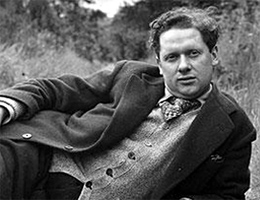Written in the form a sestina, ‘A Miracle for Breakfast’ has a complex structure. In a sestina, the last word of each line in the first stanza is repeated in varying order in the next five stanzas, ending with the three-line seventh stanza known as an ‘envoi’ involving all six repeated words. In ‘A Miracle for Breakfast’, theses words are respectively “coffee”, “crumb”, “balcony”, “miracle”, “sun”, and “river”. Even a surface reading of the poem will tell readers that these are the key words of Bishop’s poem, and they form the crux around which the subject-matter of the poem revolves.
A rhetorical device that Bishop makes use of in this poem is alliteration, that is, a series of words containing the same fundamental sound. For example, Bishop writes the line, “My crumb/ my mansion, made for me by a miracle…” in the sixth stanza. All the words in Italics use the m-sound.
It is well known that Bishop wrote ‘A Miracle for Breakfast’ after reading the double sestina entitled ‘Ye Goatherd Gods’ by Sir Philip Sidney. However, it was the immediate context in which the poem was written that really sparked her imagination. In 1935, during the Great Depression, Bishop woke up one cold winter’s day with nothing to eat for breakfast, and so a friend of hers introduced her to a brand known as ‘Wonder Bread’. This name inspired Bishop to write a poem about the kind of wonder, or in other words, the kind of miracle that could be formed around a simple physical object such as food for someone who is being forced to live without it.
By similarly analysing all the other key words, it is possible to come to an in-depth understanding of ‘A Miracle for Breakfast’. Both “coffee” and “sun” symbolize warmth, in contrast to the cold winter day that the poem depicts. Towards the beginning of the poem, it is still dark, and the sun is not yet visible, and the coffee that accompanies the start of any day for the average American is what the homeless crowd craves for. Then, in her reverie, the speaker imagines a mansion where the sun streams in through the windows, and also gallons of coffee are available for drinking. And right at the end of the poem, the speaker is convinced that the gap between the rich and the poor will never be bridged because the sun is shining on the wrong balcony, not on the balcony under which the homeless are standing, but on one where the inhabitants will not be able to appreciate what they have more than those who do not have it at all.
The words “crumb” and “loaf” both refer to bread, and can be interpreted to have a religious connotation in combination with other details from the poem. Crumb and coffee could be a metaphor for the wine and bread that are taken at Communion, and that supposedly symbolize the body and blood of Christ. In that case, Bishop is saying that by being deprived of food, the American populace is being deprived of the very fabric of life, of something as essential as church and mass.
“Balcony” refers to an elevated height. It is also relevant that by standing on the balcony, the man whom the homeless had supposed would be charitable, is able to view the entire crowd standing below him. Both of these could be interpreted in light of the religious metaphor mentioned above. The man could be taken to be an ironic symbol for Christ, who stood on Mount Calvary, and fed his follower with just a few loaves of bread. However, the man in the poem does just the opposite of what Christ had done – instead of multiplying his loaf of bread, he divides it into miniscule portions for the homeless.
By saying that the mansion of her dreams was built by insects, birds and the river working upon the earth as they first found it at the beginning of time, Bishop is trying to tell her readers that we must be resourceful, and make the most of what we have in life. She could also be implying that no matter what we lose in our material lives, we will always have nature by our side. In either case, Bishop is offering a message of faith and resilience to the American public during the Great Depression to help them through this difficult time, to a future when once again food and drink will be available in plenty, and one won’t have to wait for miracles.
Dear Readers- If this summary/analysis has helped you, kindly take a little effort to like or +1 this post or both. Make sure you like Beamingnotes Facebook page and subscribe to our mailing list so that we can keep in touch. We’ll keep informing you about stuffs that are really interesting, worth knowing and adds importance to you.
Some online learning platforms provide certifications, while others are designed to simply grow your skills in your personal and professional life. Including Masterclass and Coursera, here are our recommendations for the best online learning platforms you can sign up for today.
The 7 Best Online Learning Platforms of 2022
- Best Overall: Coursera
- Best for Niche Topics: Udemy
- Best for Creative Fields: Skillshare
- Best for Celebrity Lessons: MasterClass
- Best for STEM: EdX
- Best for Career Building: Udacity
- Best for Data Learning: Pluralsight















